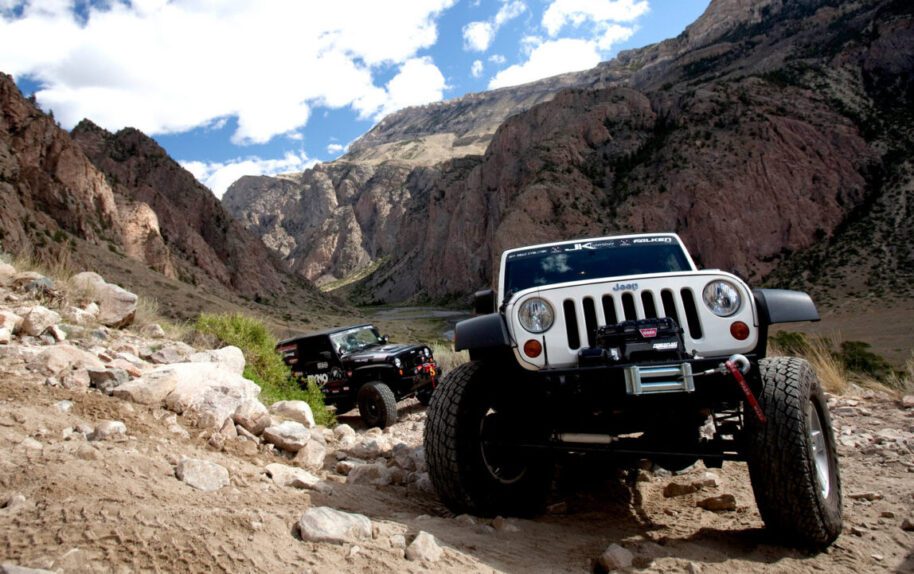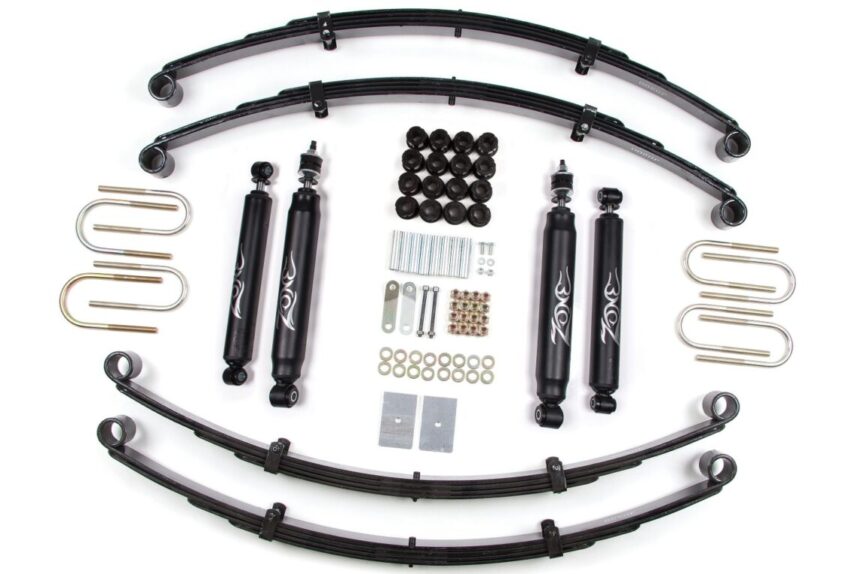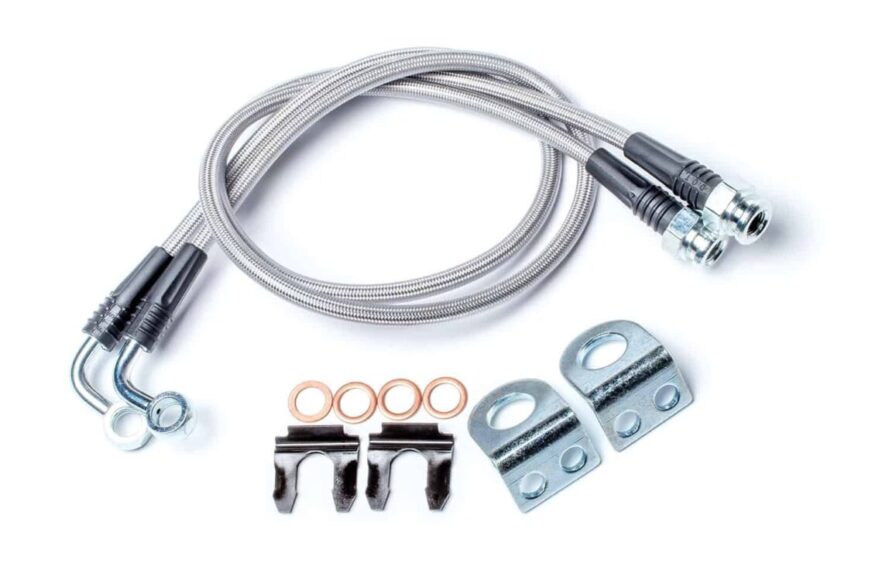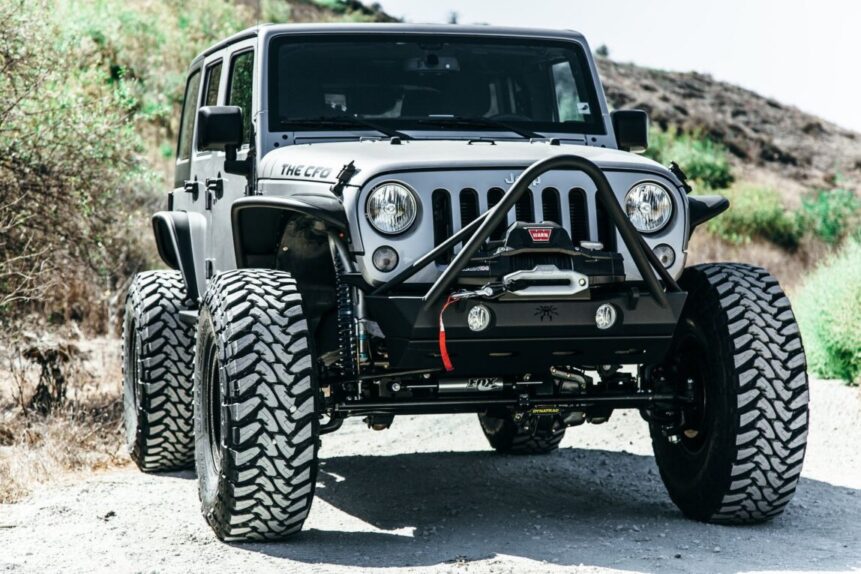Table Of Contents
- 1 How Much to Lift Jeep?
- 1.1 Explain how to determine the appropriate amount to lift a Jeep
- 1.2 Discuss factors that influence the decision (e.g. intended use, tire size, budget)
- 1.3 Provide specific recommendations for different scenarios (e.g. mild off-roading, extreme off-roading, street driving)
- 1.4 How Much To Lift Jeep: Review
- 2 How Much To Lift Jeep: Preview the main points of the article
- 3 Provide context for why someone might want to lift their Jeep
- 4 What Does “Lift” Mean?
- 5 Reasons to Lift a Jeep
- 6 Cost and Installation of Lifting a Jeep
- 7 How Much To Lift Jeep: Maintenance and Upkeep
- 8 How Much To Lift Jeep: FAQ
- 9 Briefly explain what lifting a Jeep means
- 10 Conclusion
How Much to Lift Jeep?
Explain how to determine the appropriate amount to lift a Jeep
The determination of the fitting amount to elevate a Jeep hinges on a multitude of variables, encompassing the proposed application of the vehicle, the magnitude of the tires, and the economic resources available. It is of utmost significance to take into account these factors prior to settling on the ideal height to raise a Jeep.
Discuss factors that influence the decision (e.g. intended use, tire size, budget)
Intended use of Jeep
The intended use of the Jeep is an important factor in determining how much to lift it. If the Jeep will be used for mild off-roading, a small lift may be sufficient. For more extreme off-roading, a larger lift may be necessary to accommodate larger tires and provide better ground clearance.
Tire size of Jeep
The size of the tires being used is also an important factor to consider when deciding how much to lift a Jeep. If larger tires are being installed, a larger lift may be necessary to accommodate them.
Budget
Budget is also an important consideration when deciding how much to lift a Jeep. Lift kits can range in price, and a larger lift will generally be more expensive than a smaller lift.
Provide specific recommendations for different scenarios (e.g. mild off-roading, extreme off-roading, street driving)
Mild off-roading for Jeep
For mild off-roading, a small lift of 1-2 inches may be sufficient. This will provide improved ground clearance and enough room for slightly larger tires. A leveling kit may also be a good option for those who want to improve the Jeep’s appearance without sacrificing ride quality.
Extreme off-roading for Jeep
For extreme off-roading, a larger lift of 4-6 inches or more may be necessary to accommodate larger tires and provide better ground clearance. A suspension lift kit may be the best option for those who need the extra height and improved off-road performance.

Street driving for Jeep
For those who primarily use their Jeep for street driving, a smaller lift of 1-3 inches may be sufficient. This will provide improved ground clearance and a unique appearance without sacrificing ride quality.
Ultimately, the appropriate amount to lift a Jeep will depend on the specific needs and preferences of the driver. It’s important to do research and consult with a professional to determine the best lift kit for a particular Jeep.
How Much To Lift Jeep: Review
Jeep owner’s review of the cost of the lift kit:
“Depends on the components of the lift and location. I had my 2.5 coil lift with exhaust spacers and correction bracket installed for $500otd with alignment. I had another coil lift installed with front/rear lower control arms, stainless brake lines, and exhaust spacers for $600otd with alignment…both in southern CA.”
How Much To Lift Jeep: Preview the main points of the article
In the upcoming dissertation, we will embark on an exploratory journey delving into the diverse array of lifts accessible for Jeeps, and the lucrative advantages of elevating a Jeep. We will also provide a roadmap, illuminating how to ascertain the optimal amount to lift a Jeep, taking into consideration a multitude of pertinent factors, such as intended use, tire size, and financial resources. Moreover, we will delve into the intricate details of the cost and installation process for hoisting a Jeep, as well as the requisite upkeep and maintenance mandated for an elevated Jeep. By the termination of this scholarly discourse, the readers will have a holistic and all-encompassing comprehension of the nuances involved in lifting a Jeep and whether it is a prudent and astute investment for their specific needs.
Provide context for why someone might want to lift their Jeep
There are several reasons why someone might want to lift their Jeep.
First and foremost, lifting a Jeep can significantly improve its off-road performance. By increasing the ground clearance, a lifted Jeep can more easily navigate rough terrain, such as rocky trails, deep mud, or steep inclines. Additionally, larger tires that can be installed with a lift kit can provide better traction and stability on uneven surfaces.
Another reason to lift a Jeep is for aesthetic purposes. A lifted Jeep can have a more aggressive, rugged look that appeals to many enthusiasts. It can also be a way to stand out from the crowd and express individuality.
Furthermore, lifting a Jeep can increase its versatility and functionality. With a lifted Jeep, you can tackle more challenging off-road trails and explore remote areas that would otherwise be inaccessible. Additionally, a lifted Jeep can tow and haul heavier loads with greater ease.
Ultimately, a handful of Jeep aficionados elect to elevate their Jeep for pragmatic purposes, in a bid to ameliorate visibility, and mitigate the likelihood of sustaining damage from obstructions, boulders, or debris littering the terrain ahead.
Overall, lifting a Jeep can enhance its capabilities, style, and functionality, making it a popular upgrade among Jeep enthusiasts.
What Does “Lift” Mean?
Define what it means to lift a Jeep
Lifting a Jeep refers to the process of increasing the height of the vehicle’s body or suspension, which allows for a higher ground clearance. This can be achieved through various methods such as installing a body lift kit, suspension lift kit or leveling kit.
A body lift kit involves installing spacers or blocks between the Jeep’s body and its frame to increase the overall height of the vehicle. On the other hand, a suspension lift kit increases the height of the Jeep by replacing its factory suspension components with longer and stronger ones. This allows for more travel and improved off-road performance. A leveling kit, on the other hand, is a less extreme option, which only levels out the Jeep’s stance by slightly raising the front or rear suspension.
Describe the different types of Jeep lifts available (body lift, suspension lift, leveling kit)
There are three main types of lifts available for Jeeps: body lift kits, suspension lift kits, and leveling kits.
Body Jeep lift kits
Body lift kits are a cost-effective way of lifting a Jeep. They involve installing spacers or blocks between the body and frame of the vehicle to increase its overall height. This type of lift kit usually increases the vehicle’s height by 1-3 inches.
Suspension Jeep lift kits
Suspension lift kits are a more comprehensive way of lifting a Jeep. They involve replacing the factory suspension components with longer and stronger ones, which allows for more travel and improved off-road performance. Suspension lift kits can range from 2-6 inches in height, depending on the desired lift.

Jeep Leveling kits
Leveling kits are a less extreme option, which only levels out the Jeep’s stance by slightly raising the front or rear suspension. This type of lift kit is ideal for those who want to accommodate larger tires or improve the Jeep’s appearance, without sacrificing the vehicle’s ride quality. Leveling kits typically lift the Jeep by 1-2 inches.
Overall, the type of lift kit that is best for a Jeep will depend on the intended use of the vehicle, the size of the tires being used, and the driver’s personal preferences. It’s important to do research and consult with a professional to determine the best lift kit for a particular Jeep.
Reasons to Lift a Jeep
Explain the benefits of lifting a Jeep (improved ground clearance, bigger tires, better off-road performance)
Lifting a Jeep can provide a range of benefits, including:
Improved ground clearance for Jeep
As the height of the Jeep is augmented, the chasm between the automobile’s underbelly and the terra firma is amplified, thus endowing the vehicle with a greater ground clearance, thereby rendering the Jeep capable of traversing through arduous and rugged terrain, without incurring the ignominy of scraping or mutilating its undercarriage.
Bigger tires for Jeep
Lifting a Jeep allows for the installation of larger tires. Larger tires provide more surface area and better traction when off-roading. This can help the Jeep navigate through mud, rocks, and other obstacles.
Better off-road performance for Jeep
A lifted Jeep can handle rough terrain and obstacles better than a stock Jeep. The increased ground clearance and larger tires provide better grip and handling on rough terrain.
Improved appearance
A lifted Jeep looks more rugged and aggressive, giving it a unique style that is sure to turn heads.
Address some common misconceptions about lifting a Jeep (e.g. it’s only for show, it’s unnecessary)
There are some common misconceptions about lifting a Jeep that are important to address. These include:
It’s only for show
While a lifted Jeep can certainly look impressive, there are practical benefits to lifting a Jeep as well. Off-road enthusiasts may need the added ground clearance and bigger tires to navigate through rough terrain.
It’s unnecessary
While it’s true that not everyone needs a lifted Jeep, it can be a worthwhile investment for those who enjoy off-roading or want to improve the Jeep’s appearance. Additionally, lifting a Jeep can provide better clearance for larger tires, which can be necessary for those who use their Jeep for hauling or towing.
In summation, it is evident that hoisting a Jeep can beget a plethora of gains, such as an augmented ground clearance, the luxury of installing larger tires, enhanced off-road performance, and an aesthetically distinctive demeanor. Despite the existence of certain misapprehensions regarding the process of lifting a Jeep, it can be deemed a judicious and meritorious investment for individuals who utilize their Jeep for off-roading expeditions or desire to bestow upon it a more alluring and visually appealing facade.
Cost and Installation of Lifting a Jeep
Discuss the cost of lifting a Jeep, including equipment and installation
The expense of lifting a Jeep hinges on a multiplicity of variables, such as the preferred type of lift kit, the brand name, and the magnitude of the desired elevation. A body lift kit, on average, will set you back anywhere from $200 to $500, while a suspension lift kit can induce a financial outlay of $1,000 to $5,000 or beyond. Furthermore, the cost of the installation process can fluctuate in correspondence to the intricacy of the kit, as well as the labor rates imposed by the installer.
Provide tips for finding a reputable installer
Finding a reputable installer is important to ensure that the lift kit is installed correctly and safely. Some tips for finding a reputable installer include:
- Research and read reviews: Look for installers with good reviews and a solid reputation in the Jeep community.
- Ask for referrals: Ask friends, family, and fellow Jeep owners for recommendations.
- Check certifications: Look for installers who are certified by the manufacturer of the lift kit being installed.
- Visit the shop: Visit the installer’s shop and ask to see examples of their work.
- Get a written estimate: Always get a written estimate for the cost of installation and any additional services that may be required.
Address some common installation issues (e.g. alignment, drivetrain modifications)
Alignment
Lifting a Jeep can affect the alignment of the wheels, which can cause uneven tire wear and handling issues. It’s important to have the alignment checked and adjusted after the lift kit is installed.
Drivetrain modifications for Jeep
Lifting a Jeep can also require modifications to the drivetrain to accommodate the increased height and larger tires. This can include upgrading the driveshaft, changing the gear ratio, and installing a new differential.
Brake line extensions for Jeep
Lifting a Jeep can cause the brake lines to become stretched, which can affect braking performance. Brake line extensions may be required to ensure proper brake function.

It’s important to address any installation issues promptly to ensure that the lifted Jeep is safe and performs well both on and off the road.
How Much To Lift Jeep: Maintenance and Upkeep
Explain how lifting a Jeep can impact its maintenance and upkeep
Lifting a Jeep can impact its maintenance and upkeep in several ways. The increased height can put more stress on suspension components, which can lead to more frequent repairs and replacements. It can also affect the alignment of the wheels, which can cause uneven tire wear and handling issues. Additionally, the larger tires that are often used with a lift kit can affect the Jeep’s braking and acceleration performance.
Provide tips for maintaining a lifted Jeep (e.g. checking alignment, upgrading suspension components)
Check alignment: Regularly checking and adjusting the alignment of the wheels is important for maintaining proper handling and preventing uneven tire wear.
Upgrade suspension components: Upgrading suspension components, such as shocks and springs, can help to improve the ride quality and durability of the Jeep.
Monitor tire pressure: Keeping the tires properly inflated is important for maintaining good handling and preventing uneven tire wear.
Inspect brake components: The larger tires used with a lift kit can put more stress on the Jeep’s braking system, so it’s important to regularly inspect and replace brake pads, rotors, and other components as needed.
Grease fittings: Regularly greasing the fittings on the suspension components can help to prevent wear and prolong the life of the components.
Upgrade steering components: Lifting a Jeep can put more stress on the steering system, so upgrading the steering components, such as the tie rods and drag links, can help to prevent premature wear and ensure proper steering performance.
By following these tips and performing regular maintenance, a lifted Jeep can be kept in good condition and provide reliable performance both on and off the road.
How Much To Lift Jeep: FAQ
Q: How much does it cost to lift a Jeep?
A: The cost of lifting a Jeep varies depending on the type of lift kit and the level of customization desired. A basic budget lift kit can cost a few hundred dollars, while a high-end kit with custom components can cost several thousand dollars. Installation costs can also vary depending on the complexity of the kit and the labor rates of the installer.
Q: How much can I safely lift my Jeep?
A: The amount that a Jeep can safely be lifted depends on several factors, including the model of Jeep, intended use, tire size, and budget. Generally, a lift of 2-3 inches is considered safe for most Jeeps, while lifts of 4 inches or more may require additional modifications to maintain safety and drivability.
Q: Can I install a lift kit myself?
A: While it is possible to install a lift kit yourself, it is generally recommended that a professional installer perform the installation. Lift kit installation can be complex and requires specialized tools and knowledge. Improper installation can lead to safety issues and damage to the vehicle.
Q: How does lifting a Jeep affect its performance?
A: Elevating a Jeep can markedly enhance its off-road capabilities, by conferring upon it a heightened ground clearance, the facility of achieving superior approach, departure, and breakover angles, and the opportunity to equip it with larger tires. Nevertheless, it is crucial to bear in mind that the corollary of these advantageous aspects is the possibility of negative repercussions on on-road performance, particularly in the domains of handling and ride quality, particularly if the lift kit is not affixed in an accurate and meticulous manner.
Q: Will lifting my Jeep void the warranty?
A: Lifting a Jeep can potentially void its warranty if the lift kit causes damage or if the installation is not performed correctly. It’s important to consult with the dealer or manufacturer to understand the terms of the warranty and any potential impact of a lift kit on the warranty.
Q: Do I need to make any other modifications when lifting my Jeep?
A: Depending on the amount of lift and intended use, additional modifications may be necessary to maintain safety and drivability. These can include upgrading the steering and suspension components, adjusting the gear ratios, and adding traction aids such as locking differentials or limited-slip differentials. It’s important to consult with a reputable installer to determine the appropriate modifications for your needs.
Briefly explain what lifting a Jeep means
Lifting a Jeep refers to the process of increasing the height of a Jeep’s body and/or suspension system. This can be achieved through the installation of a lift kit, which is a set of parts that allow for greater ground clearance and bigger tires. The lift kit typically includes new springs, shocks, and other components that are specifically designed to lift the Jeep’s body or suspension.
There are different types of lifts available, including body lifts, suspension lifts, and leveling kits, each with their own advantages and disadvantages. Body lifts involve raising the body of the Jeep off the frame, while suspension lifts involve replacing the Jeep’s suspension components to achieve a higher ground clearance. Leveling kits, on the other hand, raise the front of the Jeep to match the height of the rear.
On the whole, increasing the elevation of a Jeep can furnish a panoply of benefits, such as heightened off-road proficiency, enhanced clearance from the ground, and the capacity to fit bulkier tires. Nevertheless, it’s critical to bear in mind that this decision is not devoid of any detriments, including amplified costs, reduced fuel efficiency, and the possibility of facing complications pertaining to drivability.
Conclusion
How Much To Lift Jeep: Summarize the main points of the article
In this article, we have discussed what it means to lift a Jeep and the different types of lifts available. We have also explored the benefits of lifting a Jeep, including improved ground clearance and better off-road performance, and addressed some common misconceptions about lifting a Jeep. We have provided guidance on how to determine how much to lift a Jeep and discussed the cost and installation process. Finally, we have outlined some maintenance tips for keeping a lifted Jeep in good condition.
Reiterate the benefits of lifting a Jeep and encourage readers to consider it if they haven’t already
Lifting a Jeep can offer many benefits for those who enjoy off-roading or simply want a more rugged and capable vehicle. It can provide improved ground clearance, better performance off-road, and a more aggressive appearance. If you haven’t considered lifting your Jeep before, we encourage you to do so and to consult with a reputable installer to determine the appropriate amount and type of lift for your needs. With proper maintenance and upkeep, a lifted Jeep can provide reliable performance and adventures for years to come.


